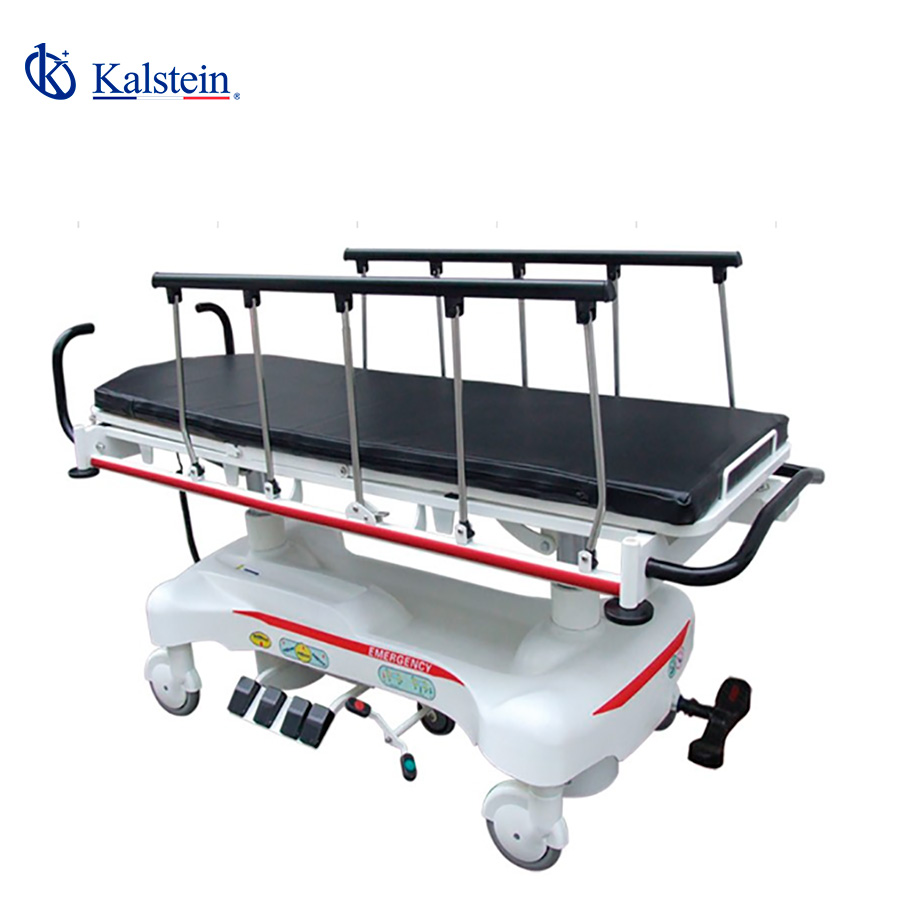Kalstein’s five-function electric transfer stretcher in the medical line is designed to enhance efficiency in laboratory tests and optimize patient treatment. This high-tech product offers a range of features that set it apart from competitors, particularly for its versatility and functionality.
This article provides a detailed comparison between Kalstein’s stretcher and other prominent models on the market, evaluating their advantages and disadvantages.
Aspirez-vous à des équipements médicaux de qualité supérieure, prêts à améliorer l’efficacité de votre laboratoire? Visitez https://kalstein.pt/category-product/medical-line/medical-transfer-stretcher/ pour explorer notre catalogue haut de gamme, rempli des meilleures découvertes et aux prix les plus compétitifs. L’excellence est notre marque de fabrique, nous innovons et fabriquons des équipements de haute précision, à la fois fiables et durables pour répondre à vos besoins. Pourquoi attendre? Faites votre achat en ligne rapidement et en toute sécurité, sautez vers le futur de la technologie médicale dès aujourd’hui. https://kalstein.pt/
Key Features and Functionalities
Kalstein: Innovation and Efficiency in Patient Care
Kalstein’s electric stretcher is equipped with five functions that allow precise and comfortable patient positioning. These functions include height adjustment, backrest inclination, leg adjustment, lateral tilt, and Trendelenburg function. This level of adjustment significantly improves efficiency in laboratory tests and facilitates the work of medical staff, ensuring safe and comfortable patient handling.
In comparison, other market stretchers often offer a limited number of functions, restricting the ability to customize patient positioning. For instance, some models only allow height and backrest adjustments, which may be insufficient in situations requiring specific positions for medical procedures or diagnostic tests.
Competitors: Where Do They Fall Short?
Notable competitors include stretchers from brands like Hill-Rom and Stryker, which also offer electric models with multiple functions. However, these products often come with a significantly higher price tag than Kalstein’s stretcher, without providing proportional benefits in terms of additional functionalities. Additionally, some models lack the Trendelenburg function, an essential feature for certain treatments and tests.
On the other hand, the simplicity of some stretchers can be an advantage in settings where high-level adjustments are not required, but this simplicity can be a drawback in more complex situations. This highlights the importance of selecting a stretcher that appropriately balances functionality and cost.
Advantages of the Kalstein Stretcher
Efficiency in Laboratory Tests
Kalstein’s stretcher is particularly beneficial in laboratory environments requiring quick and precise adjustments. The ability to make changes to the patient’s position without physical effort reduces the risk of staff injury and improves overall laboratory efficiency. Moreover, its ergonomic design and intuitive controls allow for quick and easy operation.
In contrast, some competing stretchers may require manual adjustments, which is not only slower but also increases the physical burden on staff. This aspect is critical in high-demand laboratories where every minute counts.
Improvement in Patient Treatment
Using Kalstein’s electric stretcher not only improves operational efficiency but also directly impacts the quality of patient care. The ability to quickly adjust the patient’s position facilitates more precise and comfortable medical procedures and diagnostics. Additionally, high-quality materials and robust design ensure the equipment’s durability and reliability, contributing to a better patient experience.
Conversely, lower-quality stretchers may present durability and stability issues, negatively affecting patient care. A stretcher that cannot maintain a stable position or requires constant adjustments can disrupt procedures and cause patient discomfort.
Disadvantages and Limitations
Kalstein: Are There Any Drawbacks?
Despite its many advantages, Kalstein’s electric stretcher is not without its drawbacks. One possible limitation is the need for a constant power source, which can be inconvenient in emergency situations or environments with unstable power supplies. Furthermore, while its price is competitive compared to other high-end brands, it may still be high for some limited budgets.
Comparatively, manual stretchers or those with fewer functions can be more affordable and do not rely on a power source, making them more versatile in certain situations. However, this simplicity can be a disadvantage in settings requiring frequent and precise adjustments.
Competitors: Additional Considerations
Regarding competitors, stretchers from well-known brands like Hill-Rom and Stryker, though highly functional, can present cost-related disadvantages. The high price of these models can be prohibitive for some institutions, especially those with tighter budgets. Additionally, the complexity of some models may require additional training for staff, which involves extra time and resources.
Another aspect to consider is the availability of technical service and spare parts. Kalstein offers excellent after-sales support, ensuring that any problems can be resolved quickly, while some competitors may not offer the same level of service, potentially leading to prolonged downtime and decreased operational efficiency.
Conclusion: What Is the Best Option?
Balancing Cost and Functionality
When comparing Kalstein’s five-function electric transfer stretcher with its main competitors, it is clear that Kalstein offers excellent value for money. Its multiple functions and ergonomic design significantly enhance efficiency in laboratory tests and patient treatment, making it a very attractive option for a wide range of medical settings.
On the other hand, while competitors offer high-quality products, their higher prices and some functionality limitations may not justify the additional investment, especially in situations where the budget is a critical consideration. Therefore, Kalstein’s stretcher emerges as a superior option in terms of balancing cost and functionality.
Recommendations for Purchase
For medical institutions and laboratories looking to improve operational efficiency and patient care quality, Kalstein’s five-function electric transfer stretcher represents a smart investment. Its robust design, ease of use, and multiple functions make it an essential tool for any modern medical environment. Moreover, Kalstein’s after-sales support ensures that any issues can be quickly resolved, minimizing downtime and ensuring continuous and efficient operation.
In summary, considering the advantages and disadvantages of the available market options, Kalstein’s stretcher stands out as a superior solution that combines high functionality with a reasonable cost, making it a valuable investment for enhancing efficiency and patient care quality.

